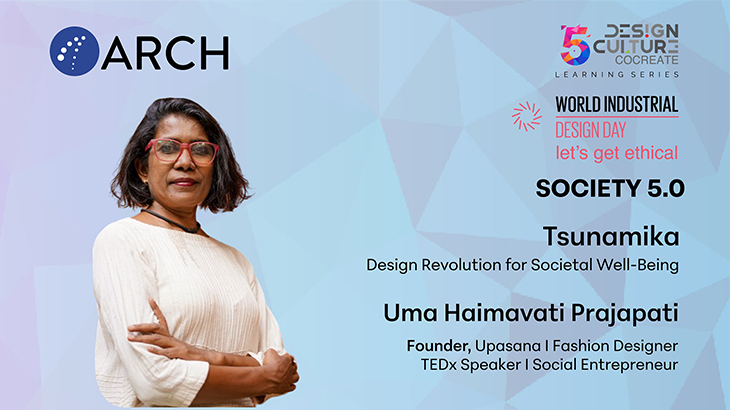India’s design landscape is undergoing a transformation. While fashion and design have long been celebrated here for their craftsmanship and cultural richness, a new movement is emerging, one that values purpose as much as aesthetics. This marks the rise of purpose-driven design, where creativity serves as a tool for healing, empowerment, and social change.
At the forefront of this shift is Uma Prajapati, designer, thinker, and founder of Upasana, a conscious fashion brand based in Auroville. In a recent session with students, Uma shared the story of Tsunamika, a small doll born in the aftermath of the 2004 Indian Ocean tsunami, which went on to become a global symbol of hope and resilience.
In this blog, we revisit the Tsunamika story and uncover valuable lessons it offers to anyone learning design today.
The Origins of Tsunamika
In 2004, the Indian Ocean tsunami devastated coastal Tamil Nadu, leaving thousands dead and countless families shattered. Women in fishing villages lost not only their loved ones but also their livelihoods and dignity. Uma Prajapati recognised that financial aid alone could not heal these wounds. What the women needed was purpose and hope. Out of this empathy was born Tsunamika—a small doll stitched from scrap fabric. What began in grief soon transformed into a global movement. Millions of dolls travelled across the world, carrying messages of resilience and empowerment.

1. Design begins with listening
At the heart of Tsunamika lies empathy. Uma and her team did not impose a solution—they began by listening. They spent time with the women, understanding their pain and recognising their need for something beyond income. This emphasis on human experience is the essence of design thinking.

For students, this means stepping outside the studio and into real lives. Great design begins with listening, not assumptions. Whether designing a product, a service, or a campaign, always begin by asking: Whose life am I trying to improve, and how can I truly understand their needs?
2. Design speaks to both hands and heart
The Tsunamika doll was more than a craft item. It carried meaning, emotion, and story. It symbolised survival and resilience. The dolls were never sold, only gifted. It made them even more powerful as tokens of human connection rather than commodities. This teaches designers to look beyond function. A chair is not only for sitting; it can represent comfort, status, or sustainability. A poster is not just information; it can inspire action or solidarity. Good design resonates both functionally and emotionally.

3. Progress comes from action
The first Tsunamika dolls were simple creations, stitched from leftover scraps. They weren’t polished products, but they carried potential. By starting small, the women could engage immediately, learn, and evolve.

For students, the lesson is clear: don’t wait for perfection. Prototypes—whether sketches, models, or digital drafts are tools to test and refine ideas. The earlier you start prototyping, the faster you learn what works and what doesn’t.
4. Purpose Over Profit
Perhaps the most radical decision was that Tsunamika dolls were never sold, only gifted. This shifted the focus from commercial gain to shared humanity, proving that design can create value far beyond money.

For young designers, this raises an important question: What is the deeper purpose of your work? Financial sustainability matters, but when design aligns with values and social good, its impact lasts longer.
5. No idea is too small
It’s easy to think that only large, well-funded projects can create change. Tsunamika proves otherwise. A small doll, stitched in a fishing village, travelled across oceans to schools, NGOs, corporations, and even governments, spreading resilience.

For students, this is a reminder: never underestimate small ideas. When rooted in empathy and purpose, even the simplest project can spark ripple effects far beyond its origin.
At ARCH, we believe design must engage with real people and real communities. Inspired by stories like Tsunamika, we guide our students to step beyond classrooms—listening, empathising, and co-creating with those whose lives they touch. This hands-on approach builds not only skills but also values, preparing the next generation of designers to become conscious changemakers in society.Be part of a generation that designs for people, not just products. Join ARCH today
